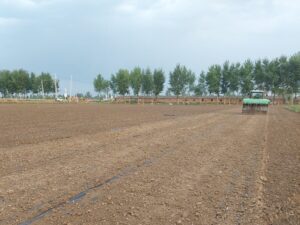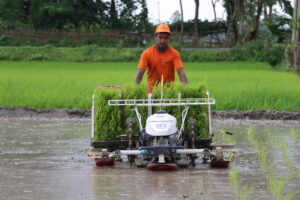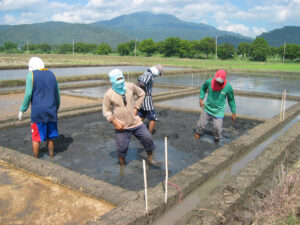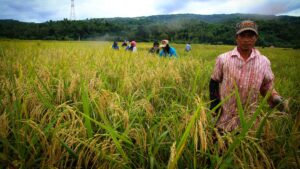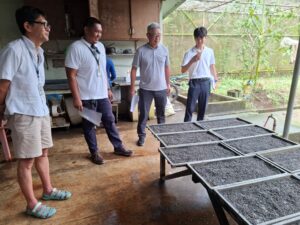IRRI has developed 3-in-1 rice through gene stacking to address vitamin A, iron, and zinc deficiencies. This biofortified rice offers a practical, low-cost solution to malnutrition without changing diets or farming practices.
by B.P. Mallikarjuna Swamy, Inez H. Slamet-Loedin , Kurniawan R. Trijatmiko, Amery Amparado , Mercy Samia, Raul Boncodin, Ma. Aileen Garcia, and Russell Reinke
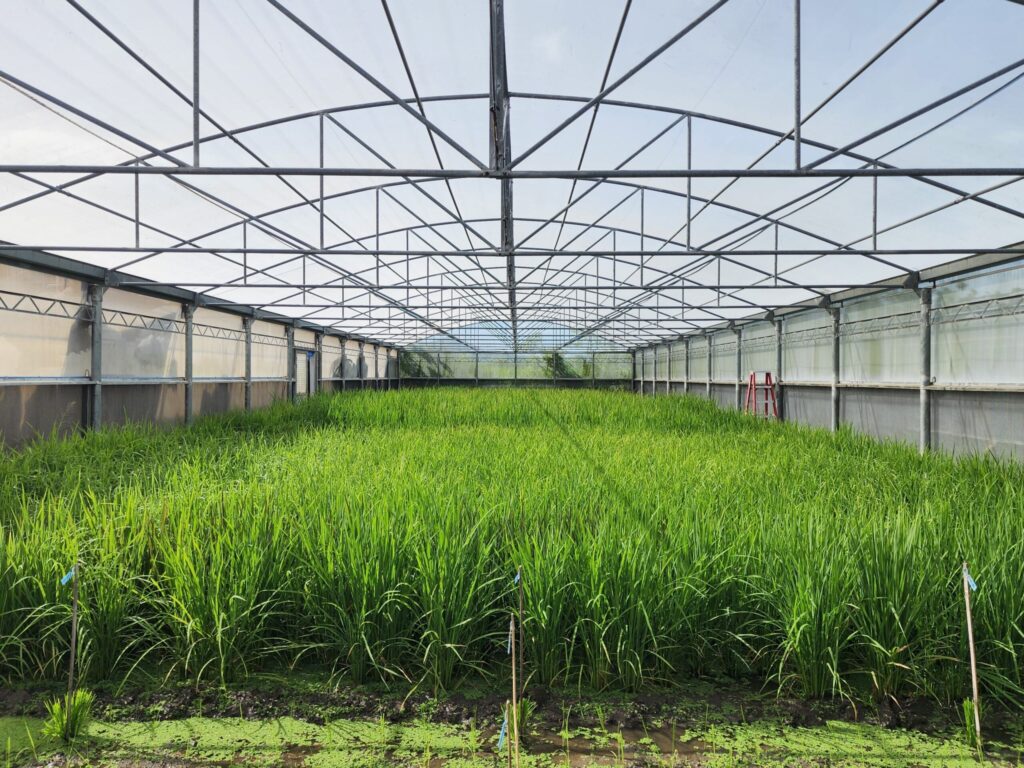
Micronutrient deficiencies, often called hidden hunger, affect more than two billion people around the world. Such deficiencies lead to anemia, weakened immunity, stunting, blindness in children, and increased risk of diseases. Women, children and elderly population in low-income countries are highly vulnerable to this form of malnutrition.
These deficiencies often occur together, with vitamin A, iron, and zinc deficiencies commonly found in the same populations. Since zinc is vital for insulin production and glucose metabolism, its deficiency has been associated with an increased risk of diabetes.
In Asia, rice is the most common food on the table, but current rice varieties in their milled form do not provide all of the essential nutrients that people need to stay healthy. Millions of families rely almost entirely on rice for their daily meals, making rice an ideal vehicle to improve nutrition.
“Deficiencies in iron, zinc, and pro-vitamin A in rice-based diets continue to cause high morbidity and mortality,” said Gates Foundation Senior Officer Lawrence Kent.
“The development of healthier rice varieties offers a promising solution, particularly in rural areas where people tend to eat the rice that they or their neighbors cultivate, which is not industrially fortified,” he added.
Biofortification through gene stacking
Most existing nutrition interventions are designed to address a single nutrient deficiency, such as iron supplements or vitamin A capsules, making it harder to tackle multiple deficiencies that often occur together. Biofortification, on the other hand, offers a more efficient and sustainable solution.
Biofortification is the process of breeding staple crops to naturally contain higher levels of essential micronutrients. Unlike food fortification, which adds nutrients during processing, biofortification enhances the crop itself during breeding.
To strengthen the impact of biofortified rice, scientists have turned to a method called “gene stacking,” which involves selecting and integrating genes that control these nutrient traits into one breeding line. In simpler terms, this technique allows multiple beneficial traits to be combined into a single variety. In this case, the goal is to combine traits for higher levels of vitamin A, iron, and zinc into popular rice varieties.

Visual comparison of conventional rice (left) versus micronutrient-enriched milled rice (right).
Building the 3-in-1 rice
The International Rice Research Institute (IRRI) combined two key genes to develop the 3-in-1 rice, which are healthier rice varieties that address multiple micronutrient deficiencies. The first is GR2E Golden Rice, which enables rice to produce provitamin A in its grains. The second is the NAS-Ferritin (IRS1030-039) gene, which increases the levels of iron and zinc content in the rice endosperm.
Scientists use gene-specific markers and tools like the 4-K SNP chip for genotyping to confirm the presence of desired genes in the genetic backgrounds of highly productive rice varieties. To measure nutrient levels in rice grains, Ultra-Performance Liquid Chromatography (UPLC) is used to assess carotenoids, while Inductively Coupled Plasma Mass Spectrometry (ICP-MS) is utilized for precise analysis of micronutrients like iron and zinc.
This breeding work has produced advanced lines of 3-in-1 rice that match the yield and quality of popular rice varieties. These lines were developed using marker-assisted backcrossing techniques and can provide up to 30 to 50% of the estimated average requirement (EAR) for vitamin A, iron, and zinc.
Following this progress, IFPRI-Emeritus Fellow and Founding Director of HarvestPlus Howarth Bouis lauded advances in crop development which allow breeders to overcome barriers in conventional biofortification.
“In the past, breeders faced key limitations, as nutrients had to be added one at a time. Progress was slow, and improvements were constrained by natural variation,” he explained.
“Today, advances in crop development allow us to overcome these barriers. With ‘Three-in-One’ Rice, we can stack nutrients simultaneously and go beyond what’s naturally available in rice,” he added.
Evaluating performance and preparing for release
The next step is to test these rice lines in multiple locations, with support from national rice programs. These trials help determine how well the varieties are adapted to different growing conditions and ensure they meet standards for yield, grain quality, and nutrition.
Lines that perform well may be recommended for release and adoption. This will involve coordination with seed systems, farmer groups, and policy partners to make the improved rice available where it is most needed.
Healthier rice for healthier communities
The development of 3-in-1 rice through gene stacking offers a promising way to tackle multiple nutrient deficiencies using a staple crop. It delivers a practical solution to populations that rely on rice without necessitating changes in eating habits or imposing extra costs on consumers.
“Delivering multiple micronutrients through rice can profoundly impact the most vulnerable, especially women and children, by helping them overcome deficiencies, reach their full potential, and build a healthier next generation,” said Dr. Russell Reinke, former Project Lead of Healthier Rice at IRRI.
As testing progresses, and collaboration continues across research and government institutions, this innovation has the potential to become part of a long-term solution to malnutrition.
As a complement to existing nutrition interventions, biofortified rice offers a food-based, affordable, and widely accessible source of essential nutrients. For the millions who depend on rice every day, this new variety brings not just food, but also better health.

